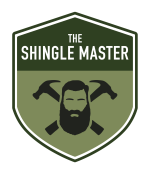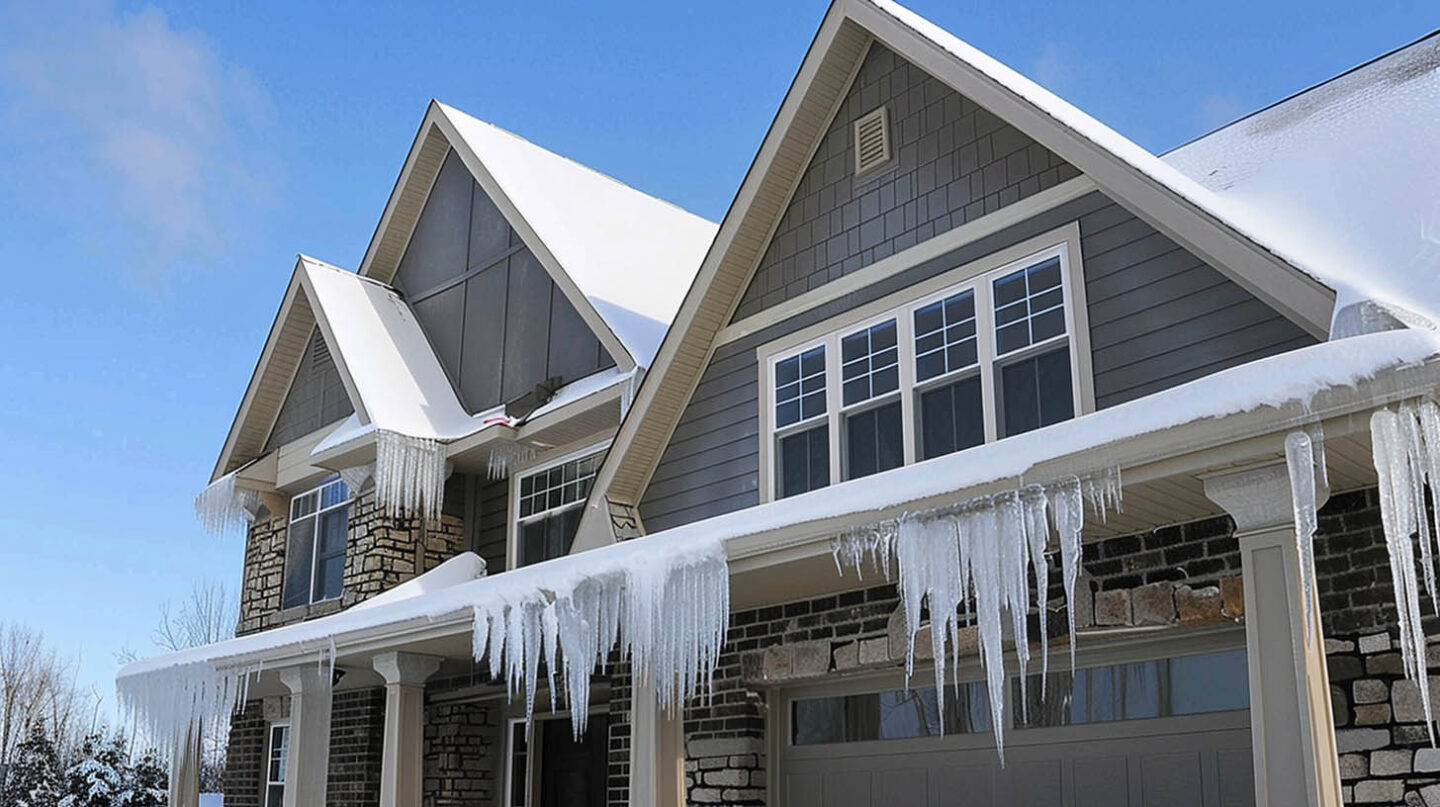When you’re investing in a new roof, you want to ensure every component works together to protect your home. One of the most critical, yet often misunderstood, materials is the ice and water shield. This waterproof membrane is your roof’s best defense against water infiltration, protecting the roof deck from costly damage. At The Shingle Master, we understand the importance of high-quality materials and expert installation in Cary, NC. Local building codes have specific requirements for where this shield must be installed, and our team is dedicated to ensuring that vulnerable spots are sealed against moisture that could affect your home’s exterior wall and structure. Trust us to provide the knowledge and craftsmanship necessary for a reliable roofing solution.
Understanding Ice & Water Shield: Purpose and Benefits
An ice and water shield serves a simple but vital purpose: it creates a completely waterproof barrier in the areas of your roof most prone to leaks. This added layer of protection is your frontline defense against persistent moisture that can sneak under your shingles.
Properly installed, this shield ensures that even in harsh weather, your home remains dry and secure. Understanding its function and benefits can help you see why it’s a non-negotiable part of a high-quality roofing system. We’ll explore what it is and the protection it offers.
What Is Ice & Water Shield and How Does It Work?
Ice & water shield is a protective roofing underlayment made from rubberized asphalt or modified bitumen designed to prevent water infiltration from ice dams and heavy rain. It adheres directly to the roof deck, forming a watertight seal that safeguards critical areas like eaves, valleys, and penetrations against moisture damage.
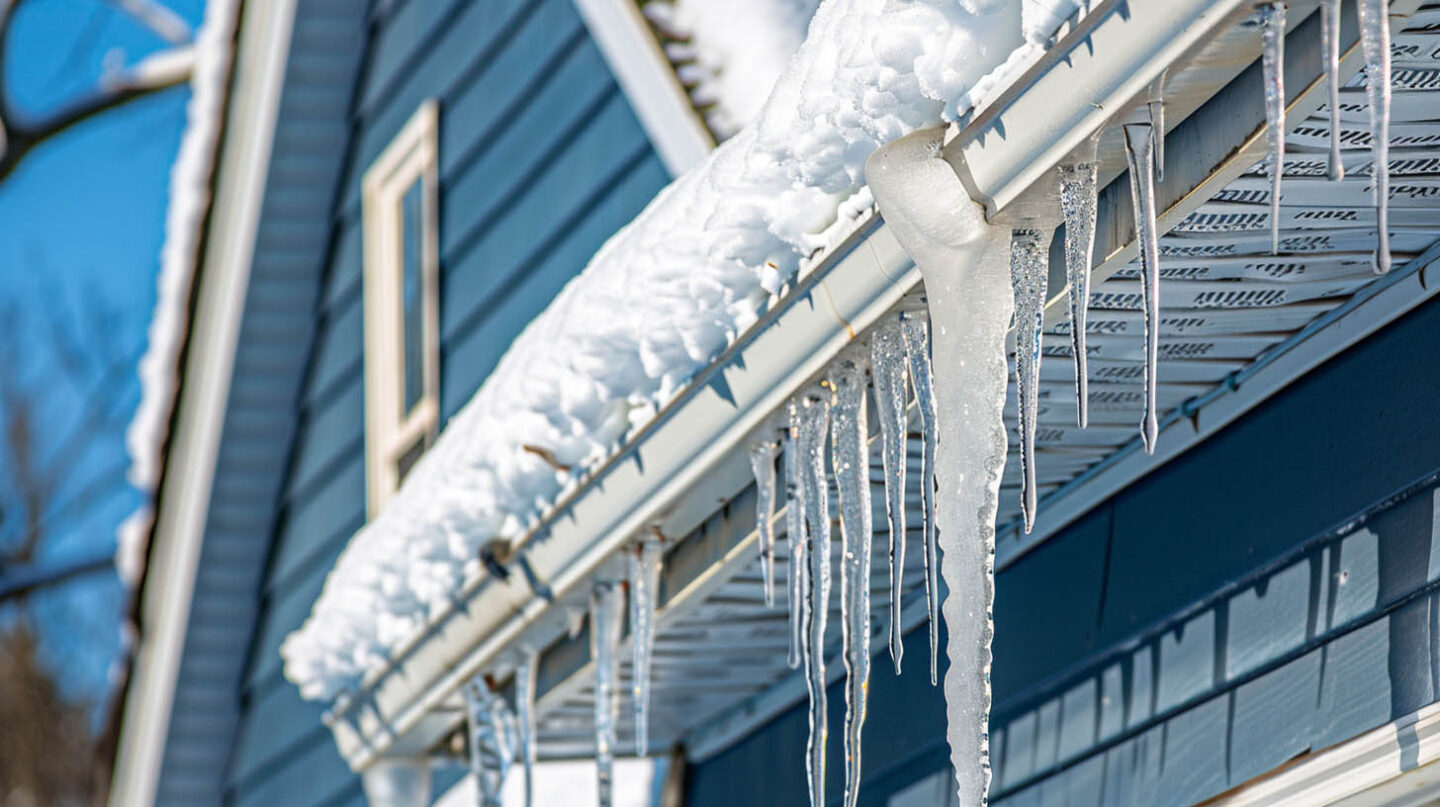
Key Benefits—Protection Against Leaks, Ice Dams, and Wind-Driven Rain
A vital component in roofing systems, Ice & Water Shield acts as a protective membrane that safeguards against leaks, particularly in regions prone to heavy snow, rain, and gutters. By effectively sealing eaves, valleys, and roof penetrations, it prevents moisture infiltration that can lead to water damage. In addition, this underlayment helps to combat ice dams by allowing melting snow to drain properly and diminishes the risk of wind-driven rain entering through gaps, ensuring a resilient roofing structure for homeowners.
Building Code Requirements for Ice & Water Shield in North Carolina
In North Carolina, building codes aren’t just suggestions; they are minimum standards designed to protect you and your home. When it comes to roofing, these codes have specific rules for installing ice and water shields to ensure every home has a baseline level of protection against water intrusion.
Achieving code-compliance is essential for passing inspections and avoiding future issues. As a GAF Master Elite Contractor, The Shingle Master is deeply familiar with these local and state requirements, ensuring your roof is built right the first time. Let’s look at what the codes say.
Overview of Relevant Residential Codes (IRC & Local)
Numerous residential codes govern the use of Ice & Water Shield, particularly the International Residential Code (IRC) and specific local regulations. Homeowners must familiarize themselves with these guidelines to ensure compliant installation. Typically, codes mandate that the membrane be applied at eaves, valleys, and around roof penetrations, effectively safeguarding against leaks and water damage. In cold climates, understanding these requirements is crucial for long-term roof performance, as improper application can lead to costly repairs and extended exposure to moisture-related issues.
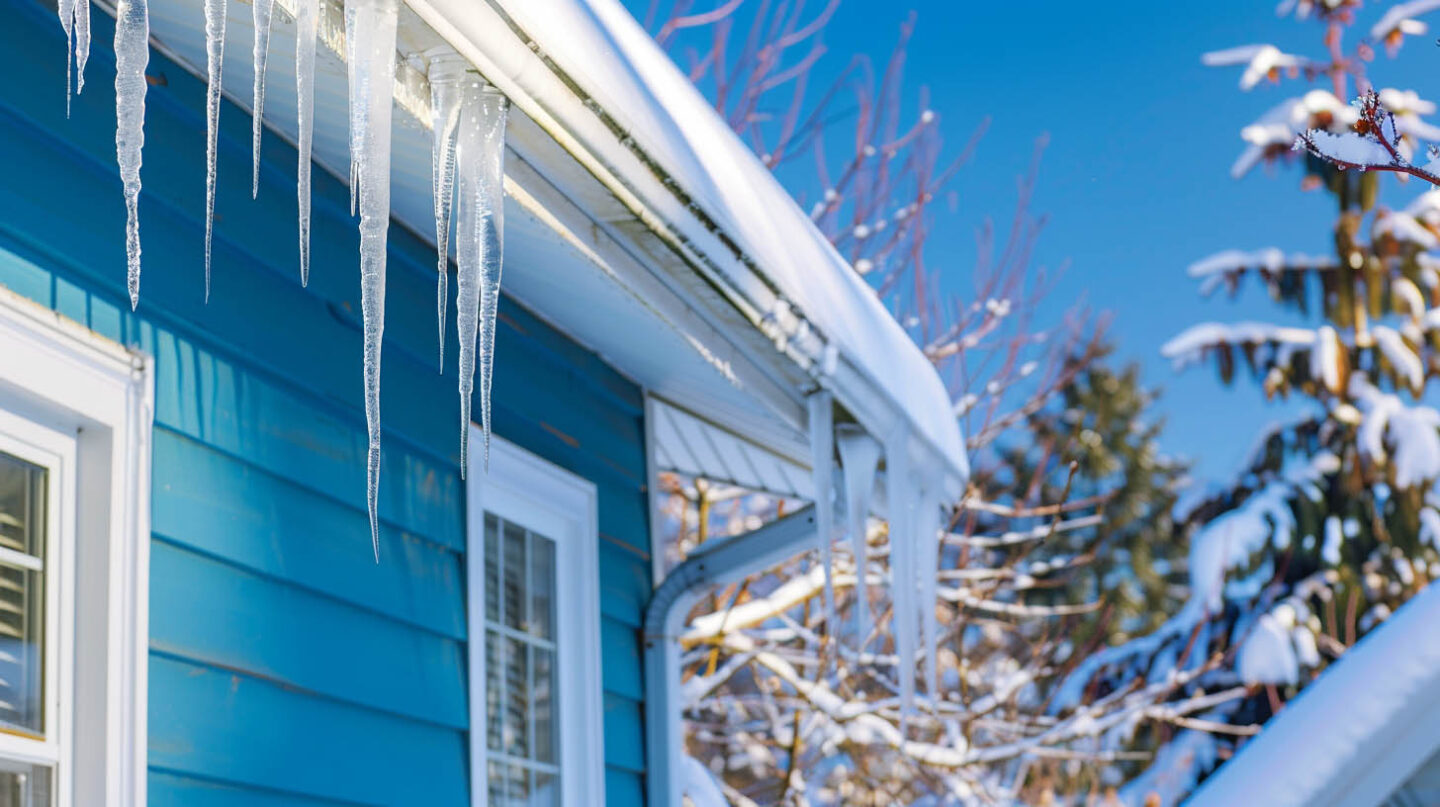
Minimum Placement Areas Required by Code
Specific placement areas for ice and water shield are dictated by building codes, particularly in cold climates where moisture intrusion risks are heightened. Typically, installation is mandated at the eaves and extends a minimum of three feet up from the exterior wall. Additionally, areas under shingles, valleys, and around roof penetrations such as chimneys must be adequately covered to prevent leaks and water damage. Failure to comply with these specifications can lead to significant structural issues down the line.
Code-Compliant Installation: Eaves, Valleys, and Roof Penetrations
Knowing where the ice and water shield goes is the first step; installing it correctly is the next. A code-compliant installation ensures that the membrane performs as intended, creating a truly watertight seal at the eaves, in the valleys, and around all roof penetrations. The process involves more than just sticking it down.
Proper overlapping, sealing around fasteners, and integration with other roofing materials are crucial for long-term performance. Before the first shingles are laid, these vulnerable areas must be perfectly protected according to code specifications. Let’s break down the details for these critical areas.
How Far Up from the Eaves Should Ice & Water Shield Extend?
Ice & water shield should extend at least 24 inches up from the eaves, ensuring adequate coverage against leaks. Some codes may require more, especially in areas prone to ice dams, so checking local regulations is essential for compliant installation.
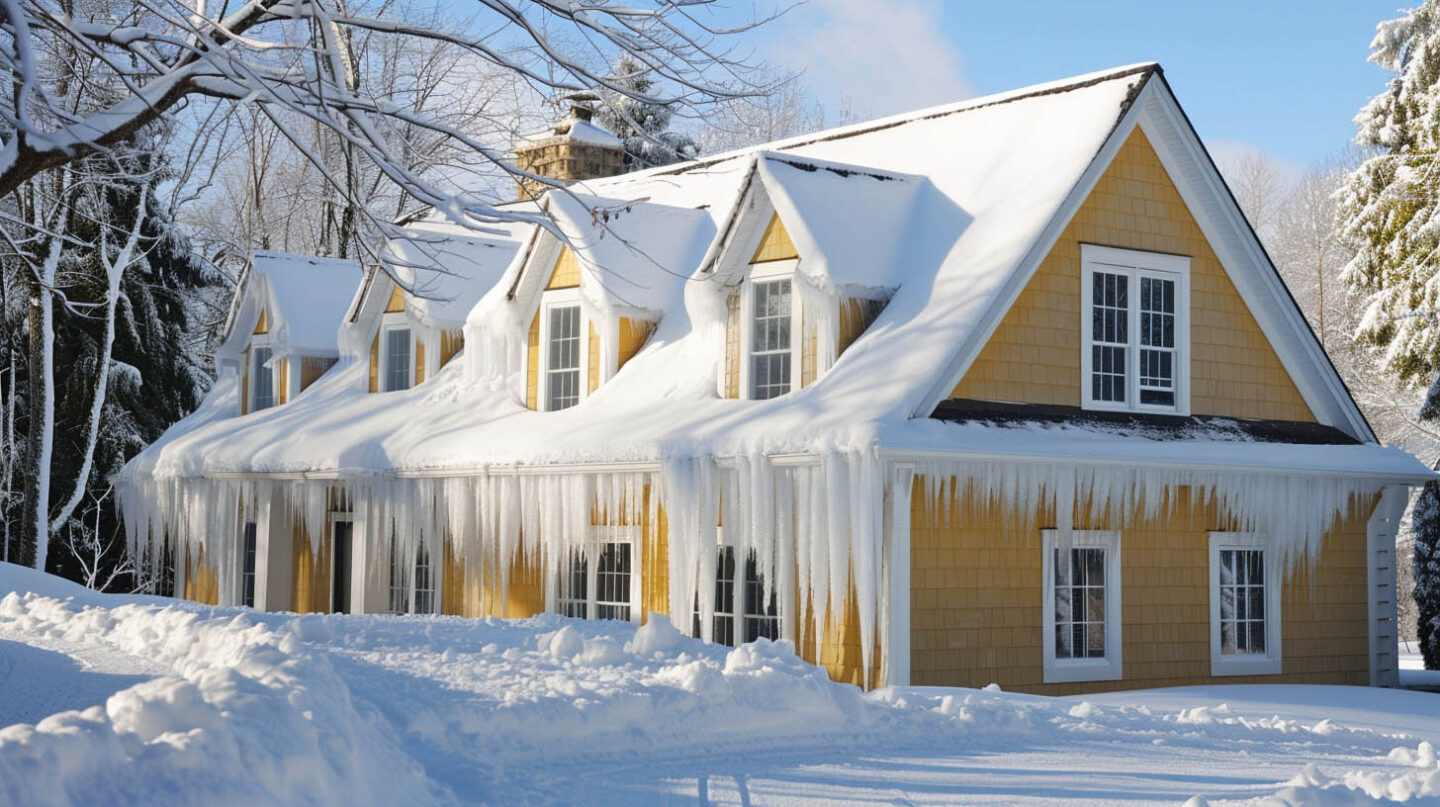
Ice & Water Shield Placement in Valleys, Dormers, and Around Chimneys
Proper placement of ice and water shield is critical in areas prone to water damage, especially in valleys, dormers, and around chimneys. This waterproof membrane should extend at least 36 inches up from the eaves and cover the entirety of the valley for optimal protection against leaks and ice dams. Additionally, when installing around chimneys and siding, ensure that the shield integrates seamlessly with the roofing underlayment to create a continuous barrier against moisture intrusion, safeguarding your roof deck and exterior walls.
Special Roof Features & Exceptions
While the rules for eaves and valleys are straightforward, some roof designs present unique challenges. Features like skylights, intersections with walls that require step flashing, and even certain roofing materials like slate may have different considerations under the code.
It’s also important to know that there are rare exceptions where an ice and water shield may not be required. Understanding these special cases and how to handle them ensures every part of your roof is protected, with no weak spots left behind. We’ll look at these specific situations next.
Get in Touch
Incorporating ice and water shield as per the relevant building codes is essential for any roofing project, especially in cold climates. This protective membrane plays a critical role in safeguarding the roof deck from moisture intrusion and potential water damage. Proper placement of the underlayment ensures that areas around eaves, valleys, and roof penetrations are adequately protected, ultimately enhancing the durability of your roofing system. Homeowners should be proactive in understanding and adhering to these code requirements to ensure a long-lasting roof. As a GAF Master Elite Contractor, BBB A+, Haag Certified Inspector, NC Licensed General Contractor, and Raleigh’s Best Roofing Contractor, we emphasize the importance of quality installation and compliance with industry standards.
Frequently Asked Questions
What does ICE do when you report someone?
ICE, or Immigration and Customs Enforcement, investigates allegations of immigration violations. When you report someone, they assess the information received, which may lead to an investigation, enforcement actions, or potential detention of the reported individual if warranted by the circumstances.
Can I call ICE on my neighbor?
If you suspect your neighbor is violating building codes, such as those related to ice and water shield installation, you may report them to local authorities. Ensure that your concerns are valid and based on specific code violations before making the call.
Read our blog: Solar Shingles vs Rack-Mounted Panels: A Side-by-Side
